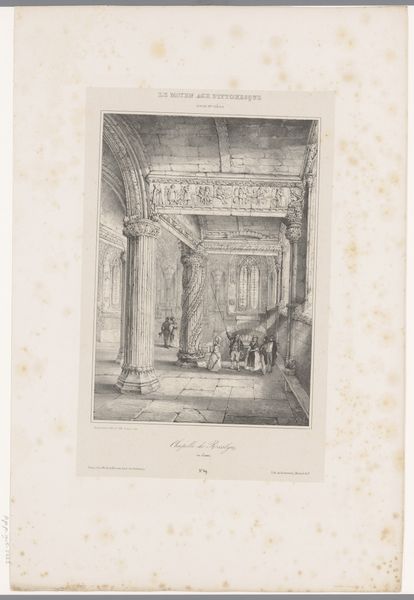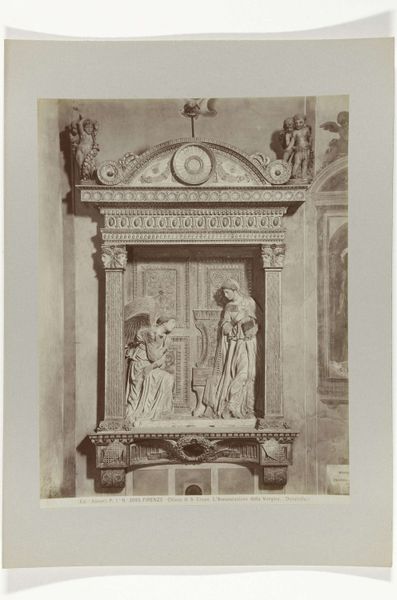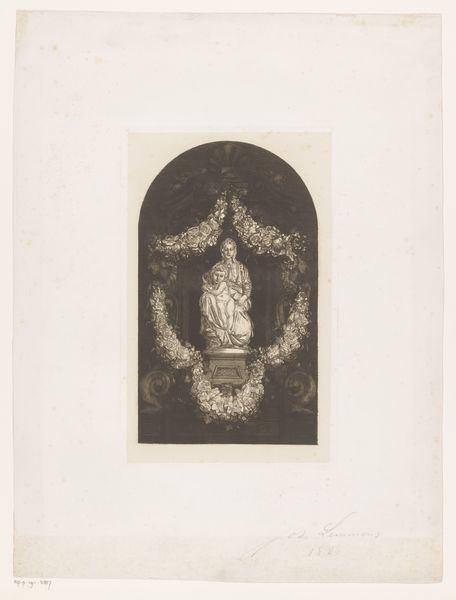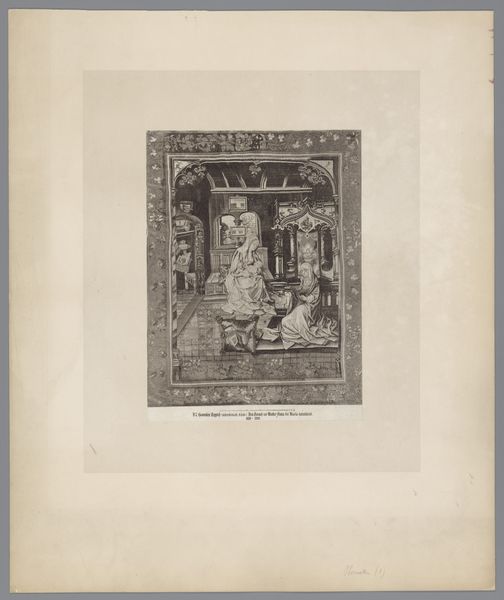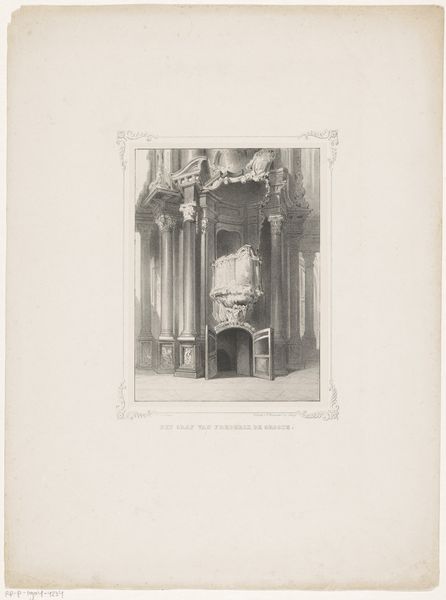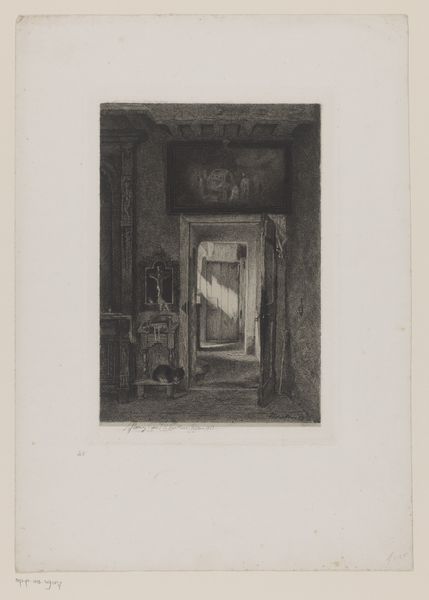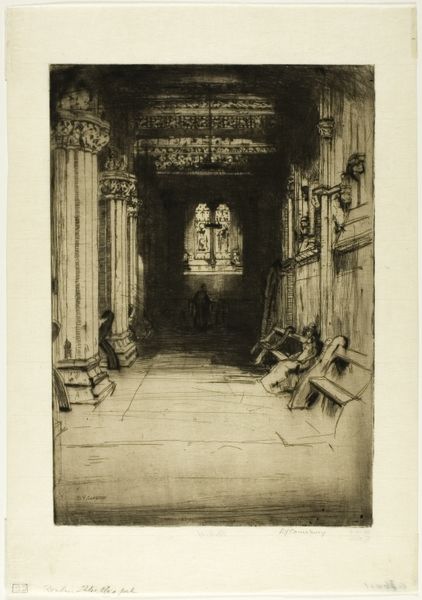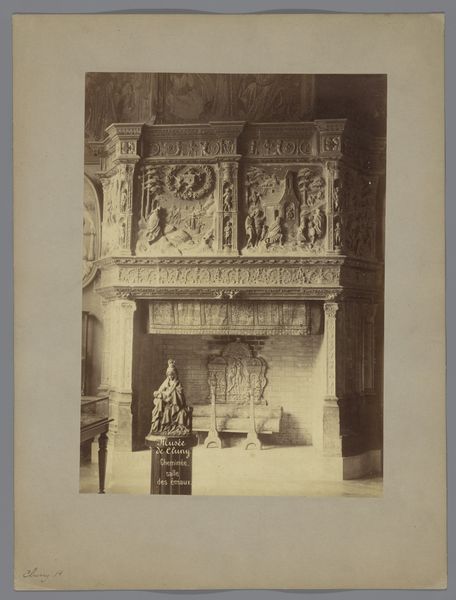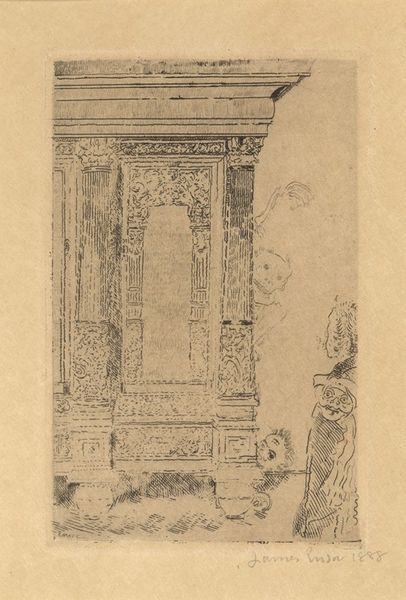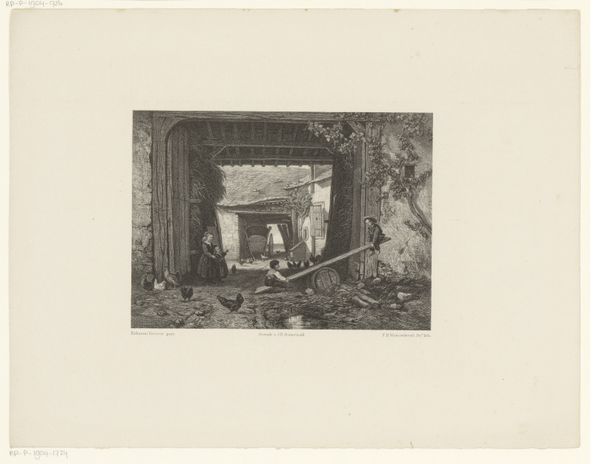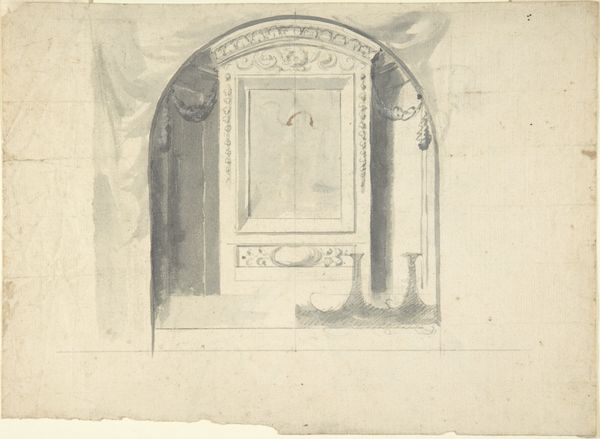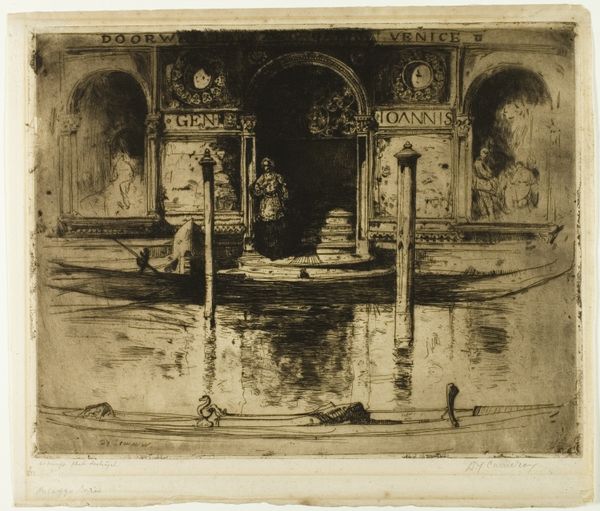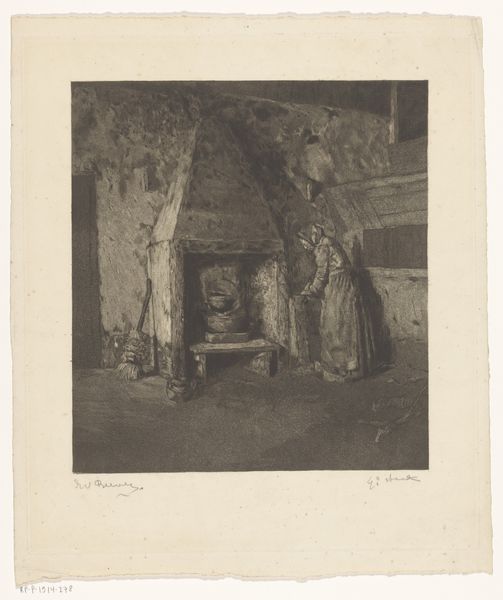
drawing, print, etching, paper
#
drawing
# print
#
etching
#
landscape
#
paper
#
cityscape
#
genre-painting
Dimensions: 304 × 206 mm (image/plate); 447 × 290 mm (sheet)
Copyright: Public Domain
Curator: This is David Young Cameron's etching, "The Abbazia, Venice," created around 1900. The work captures a glimpse of Venetian life, framed by the ornate doorway of what appears to be a cloister. Editor: My initial impression is one of stillness, a quiet moment captured amidst the grand architecture. There’s an almost palpable sense of enclosure, and the details on the doorway contrast beautifully with the ambiguity of light within the cloister. Curator: Absolutely, and let’s consider the period. At the turn of the century, Venice was a popular destination for artists and writers. Cameron's print comes amidst a backdrop of rising industrialism that challenged identity in cities. We should note that views on Venice as the fallen city became prominent with the rise of figures like John Ruskin and would likely affect Cameron as well. Editor: The archway as an opening also resonates beyond its architectural function; its very existence points toward pilgrimage, toward the seeking of knowledge, but then the figure seems stalled within the shade, carrying bundles in a manner reminiscent of medieval Christian iconography—as in depictions of Saint Joseph in flight into Egypt, weighted down with both luggage and anxiety for his burden, Jesus. Curator: I see what you mean—though her ambiguous identity feels vital to understanding Cameron's focus, where identity in this kind of pre-war artwork and print is focused instead on the picturesque. The viewer becomes almost as important as the figure herself. I agree about your allusion to her bundles though. What could this kind of female presence convey? The woman is cloaked in material—evoking allusions toward gendered labour practices—not only about religious meaning, but also as related to her socio-economic place, thus complicating further readings of pilgrimage. Editor: True. I was drawn into more immediately spiritual, but perhaps limited view, with that detail of bundling; thinking about this in conjunction with a city under pressure certainly opens more considerations. Curator: Precisely, this reminds me of Benedict Anderson's theorizations on the nation state—a society that may have been built to maintain stability with shared experiences as evoked here within this snapshot. But there may have been ruptures just beneath. Editor: Ultimately, it’s that enduring visual echo that compels, transcending its immediate historical context and speaking to something inherently human and timeless. Curator: Yes, and this print reveals to us the ongoing dialogues between socio-economic context, place, memory, identity, and of course, that mysterious, veiled woman standing as a nexus between architecture, light, and historical understanding.
Comments
No comments
Be the first to comment and join the conversation on the ultimate creative platform.
